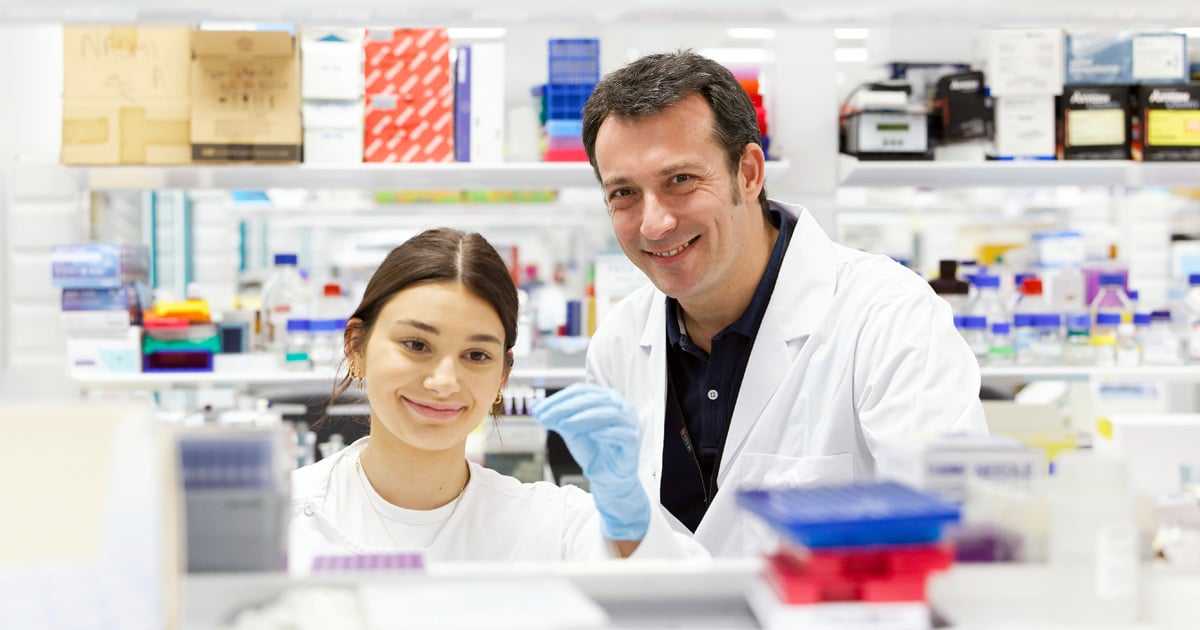Search

News & Events
Pioneering new treatments for leukaemia in children with Down syndromeA team of world-leading scientists has secured $5 million in funding from the Leukaemia and Lymphoma Society to advance the fight against leukaemia in children with Down syndrome.
Research
Co-design of the neurodevelopment assessment scaleNeurodevelopmental disorders (NDDs) have high comorbidity rates and shared etiology. Nevertheless, NDD assessment is diagnosis-driven and focuses on symptom profiles of individual disorders, which hinders diagnosis and treatment. There is also no evidence-based, standardized transdiagnostic approach currently available to provide a full clinical picture of individuals with NDDs. The pressing need for transdiagnostic assessment led to the development of the Neurodevelopment Assessment Scale.
Research
Discovery of 42 genome-wide significant loci associated with dyslexiaReading and writing are crucial life skills but roughly one in ten children are affected by dyslexia, which can persist into adulthood. Family studies of dyslexia suggest heritability up to 70%, yet few convincing genetic markers have been found.

News & Events
The Kids researchers finalists in Premier’s Science AwardsThree outstanding The Kids Research Institute Australia researchers have been named finalists in the 2016 Premier's Science Awards
Research
Pain coping tools for children and young adults with a neurodevelopmental disability: A systematic review of measurement propertiesTo systematically identify and evaluate the measurement properties of patient-reported outcome measures (PROMs) and observer-reported outcome measures (parent proxy report) of pain coping tools that have been used with children and young adults (aged 0–24 years) with a neurodevelopmental disability.
Research
A brief history of MECP2 duplication syndrome: 20-years of clinical understandingMECP2 duplication syndrome (MDS) is a rare, X-linked, neurodevelopmental disorder caused by a duplication of the methyl-CpG-binding protein 2 (MECP2) gene-a gene in which loss-of-function mutations lead to Rett syndrome (RTT). MDS has an estimated live birth prevalence in males of 1/150,000.
Research
A longitudinal examination of perinatal testosterone, estradiol and vitamin D as predictors of handedness outcomes in childhood and adolescenceThe developmental origins of handedness remain elusive, though very early emergence suggests individual differences manifesting in utero could play an important role. Prenatal testosterone and Vitamin D exposure are considered, yet findings and interpretations remain equivocal.
Research
CDKL5 deficiency disorder: clinical features, diagnosis, and managementCDKL5 deficiency disorder (CDD) was first identified as a cause of human disease in 2004. Although initially considered a variant of Rett syndrome, CDD is now recognised as an independent disorder and classified as a developmental epileptic encephalopathy.
Research
Childhood Systemic Lupus Erythematosus: Presentation, management and long-term outcomes in an Australian cohortSystemic Lupus Erythematosus (SLE) is a serious autoimmune disease often resulting in major end-organ damage and increased mortality. Currently, no data exists focussing on the presentation, long-term management and progression of SLE in the Australian paediatric population.
Research
A Multisite Randomized Controlled Trial of Hand Arm Bimanual Intensive Training Including Lower Extremity for Children with Bilateral Cerebral PalsyTo test the efficacy of Hand Arm Bimanual Intensive Therapy Including Lower Extremity (HABIT-ILE) to improve gross motor function, manual ability, goal performance, walking endurance, mobility, and self-care for children with bilateral cerebral palsy.
